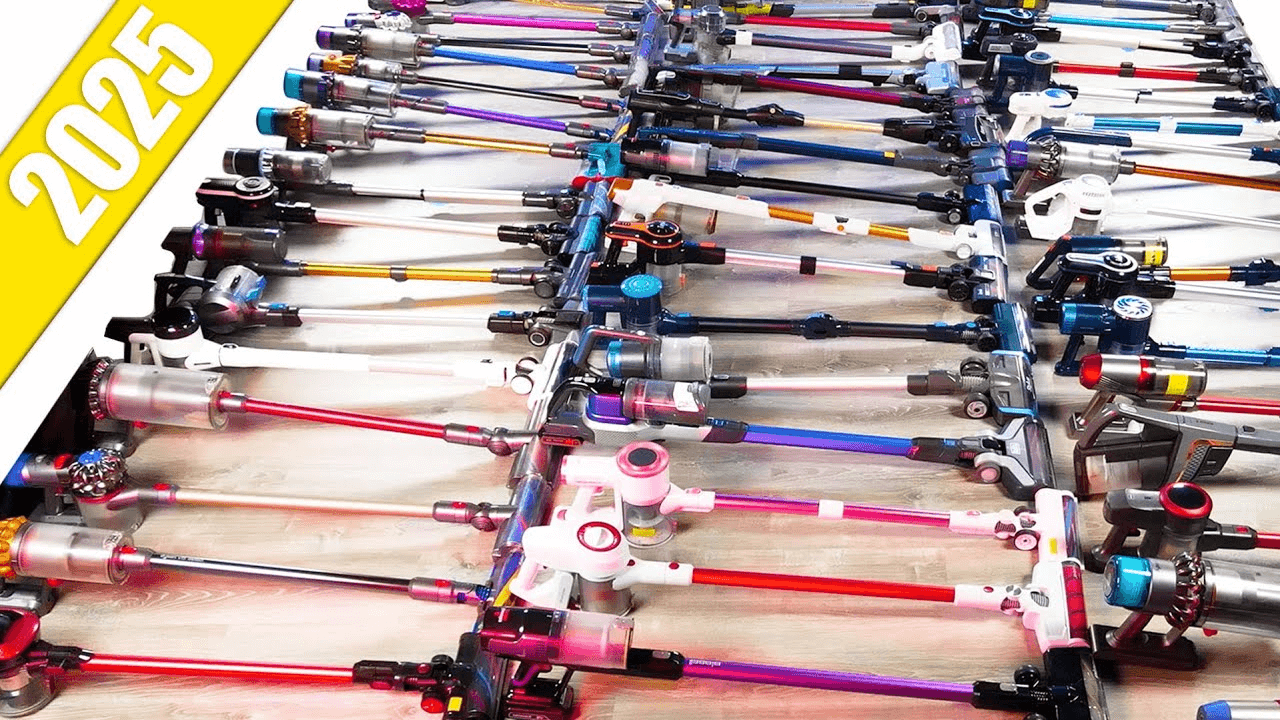At Vacuum Wars, we’ve purchased and independently tested over 100 cordless vacuums. Along the way, we’ve learned what really matters—and what doesn’t—when choosing the best cordless vacuum for your home.
Cordless vacuums are a great alternative to traditional models. They’re lightweight, convenient, and much easier to maneuver than bulky corded vacuums. But with prices ranging from under $100 to over $1,000, and features that vary widely between models, it’s important to know what you’re getting.
In this cordless vacuum buyer’s guide, we’ll walk you through the seven most important things to consider before buying a cordless vacuum. Whether you’re looking for powerful suction, long battery life, or advanced filtration, this guide covers the key features to look for.
And if you’re ready to compare specific models, don’t miss our regularly updated list of the Top 10 Best Cordless Vacuums. It’s based on real-world testing and data from our comprehensive vacuum reviews.
Flooring Types and Floor Heads
One of the first questions to consider when shopping for a cordless vacuum cleaner is: do you have a lot of carpets, hard floors, or a mixture of both? Most cordless vacuums have one combination floor head, designed to work well with hard floors and carpets. However, we found these combo floorheads can vary a lot in quality.
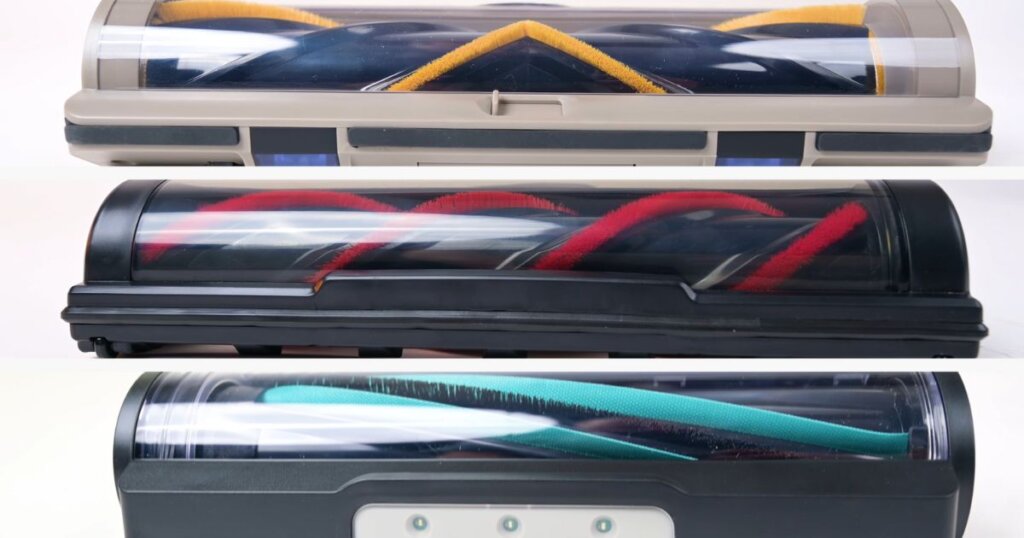
The way we think of combo floorheads is: the better they are at one surface type, the worse they are at the other.
Combination Floor Heads
For example, some combo heads are positioned low to the ground with very small air gaps in the front. We call these gaps “gates” and those low designs are excellent with carpet deep cleaning because they have a great seal and don’t allow much air in.
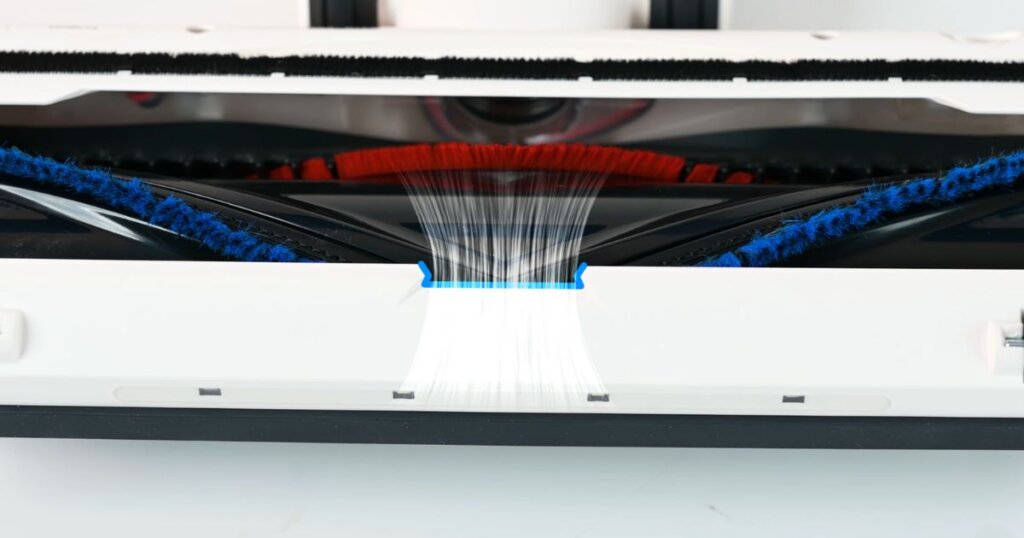
But on the flip side, the same low design tends to snowplow larger debris, especially on hard floors. In other words, they push around debris because the gates are so small.
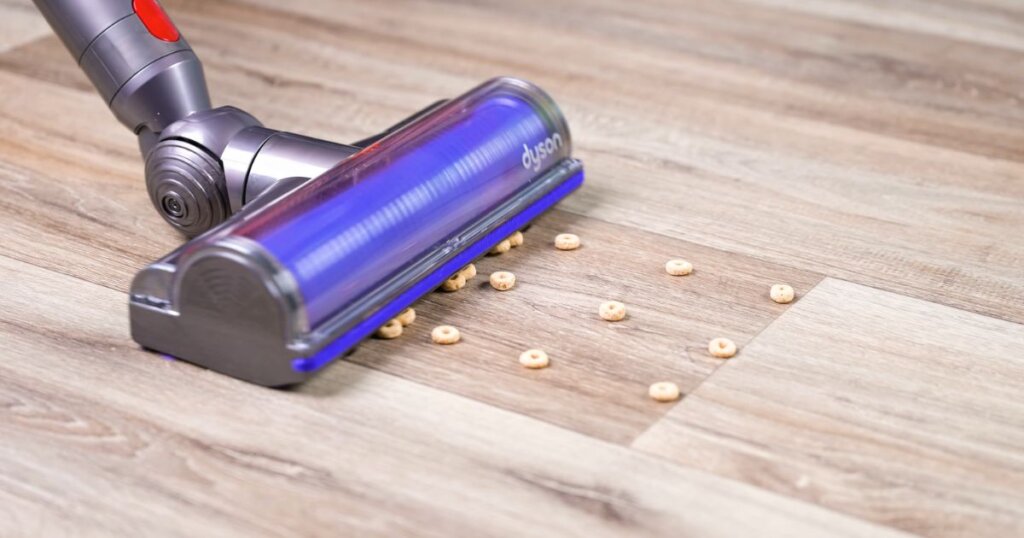
On the other hand, there are also combo floor heads that have much larger front gates and let in a lot more air. These types are much better at picking up larger debris but tend to be worse at carpet deep cleaning and things like our crevice pickup evaluation—where a good seal is essential.
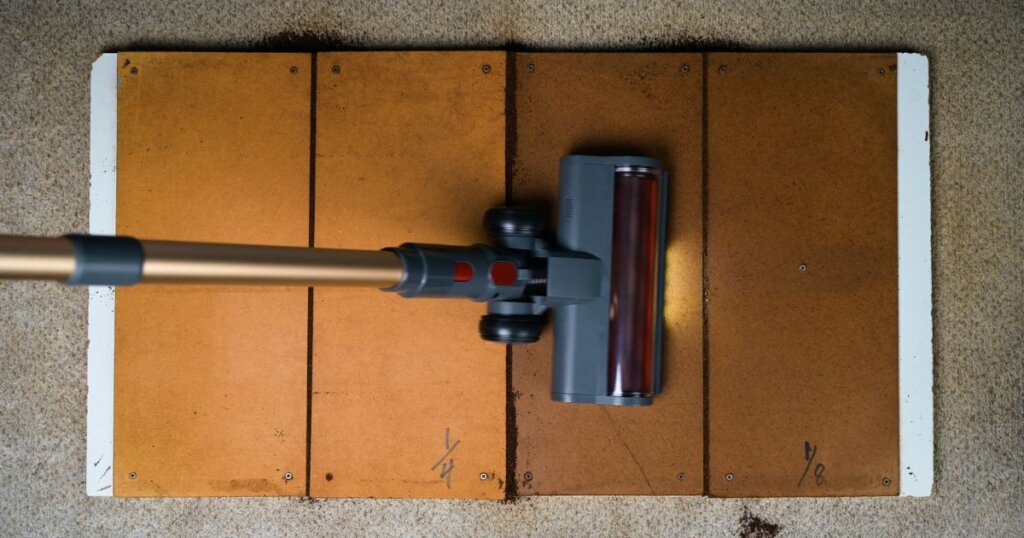
So the best goal with combo floor heads is to find one right in the middle regarding its gate.
Soft Roller Heads
That noted, in recent years, standalone soft roller heads have been introduced; they’re amazing on hard floors, though generally less effective on carpets.
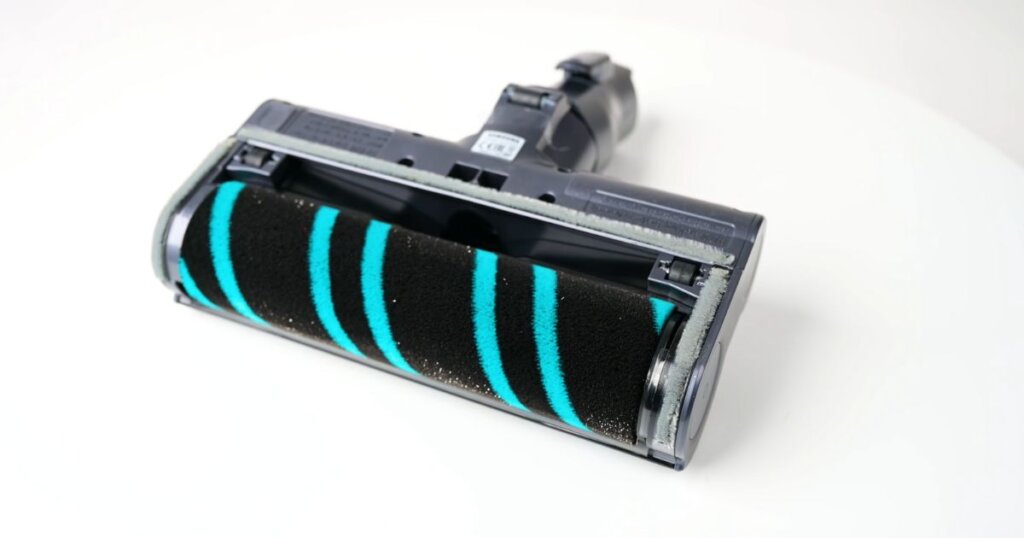
Soft roller heads create an amazingly good seal on floors and can pick up practically any size of debris on hard floors – even super fine debris like dust. They’re also good for things like picking up debris from crevices and vacuuming up hair of all types without tangles.
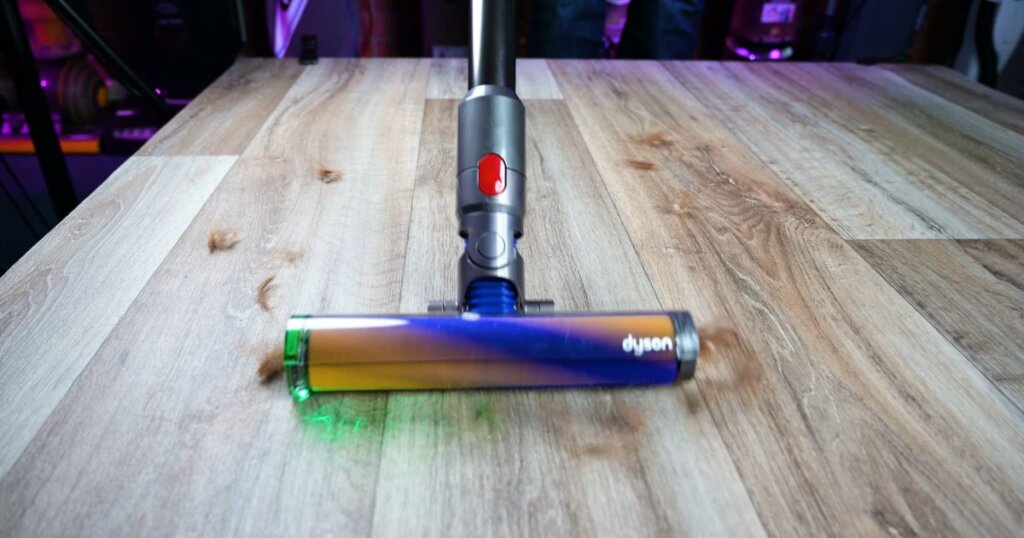
We have found that there really is no better floor head type for hard floors, which is no surprise since soft roller heads are exclusively designed for those.
Two Roller Heads
Many manufacturers have solved consumer satisfaction gaps by including two heads in the package: one combo head that can be used for either hard floors or carpets, and one soft roller for just hard floors.
This is a decent solution, but it does mean changing the floor head from the soft roller to the combo roller whenever you want to vacuum a rug or carpet, which some users may find impractical.
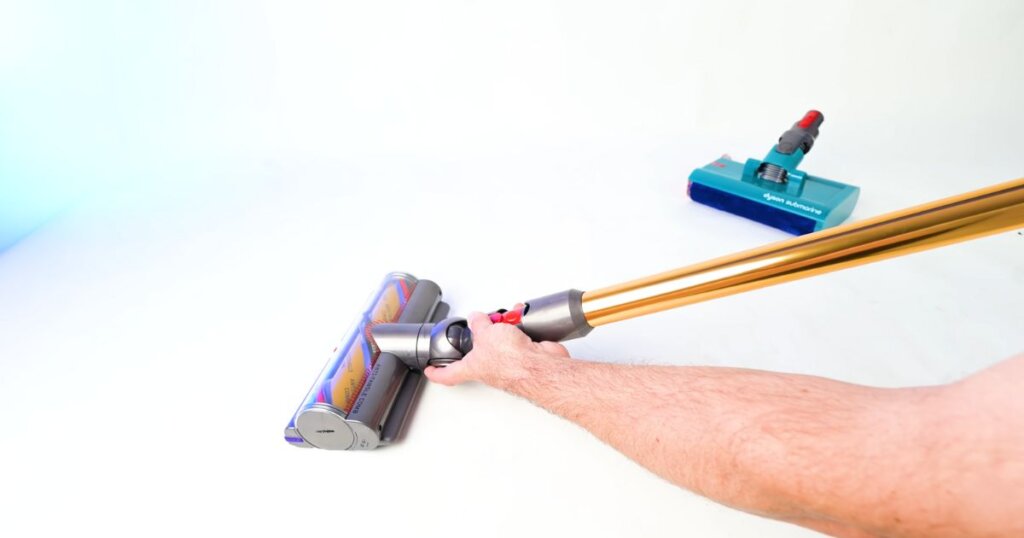
Duo Clean Roller Heads
A more recent solution is the Duo Clean heads that Shark first introduced. These have a soft roller up front and a traditional roller in the back. Many manufacturers now have their own versions of it as well.
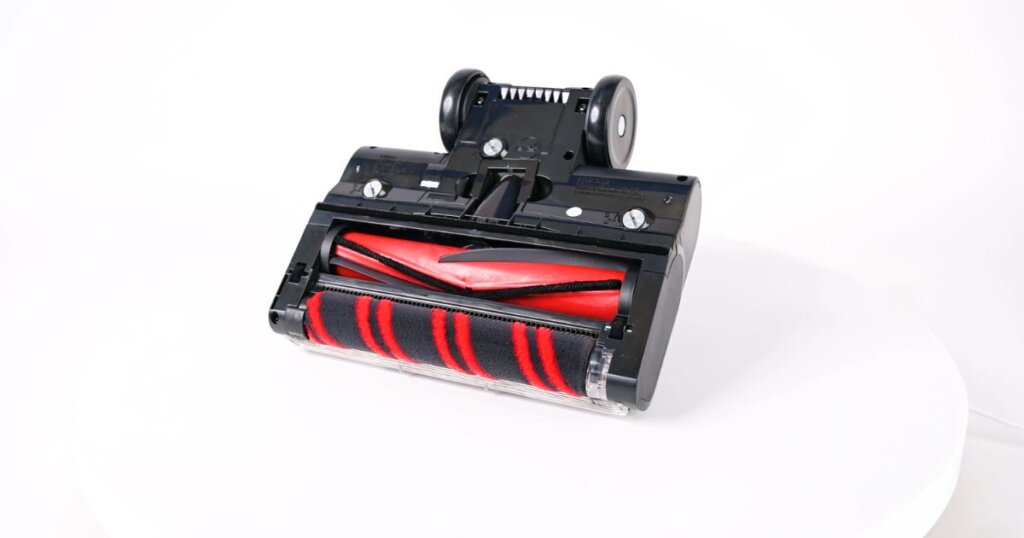
However, dual rollers tend to be more expensive and a little heavier. In addition, you must pop out the front roller and clean behind it regularly since it tends to accumulate debris. But once you vacuum with a dual roller and experience how effective it can be, returning to a combo roller is hard.
In fact, as of the time of writing this, about five of the best vacuums on our top 10 cordless vacuums list have dual rollers.
Battery Life
The battery is the second thing you’ll need to consider when buying a cordless vacuum.
Official Battery Numbers
Cordless vacuum manufacturers typically state the battery life in the product listing. But those numbers are almost always referring to the lowest power setting.
Official battery life numbers can range from 60 to 70 minutes on low power (about 20 minutes for the cheaper ones). The average is about 44 minutes for the ones we’ve evaluated.
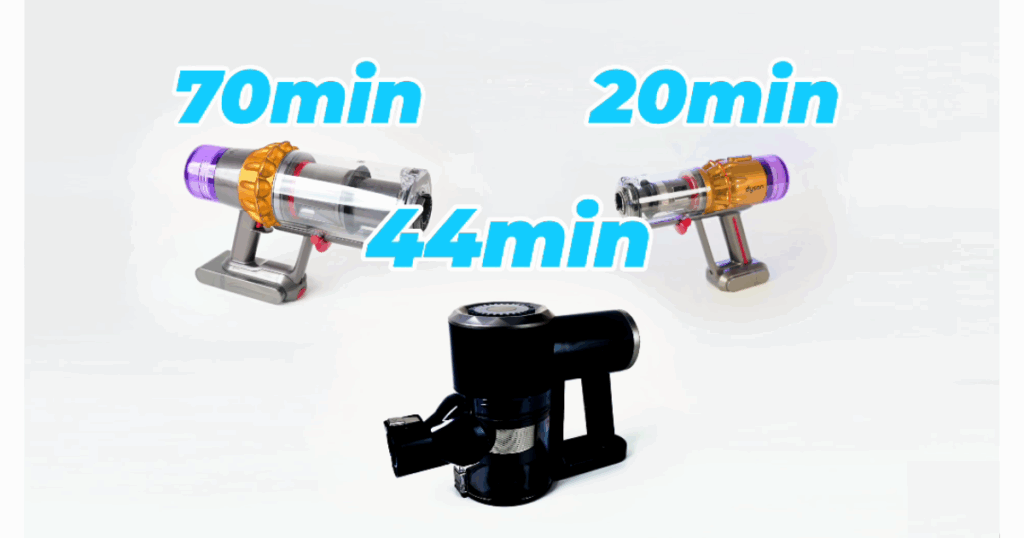
Most cordless vacuums will have three power settings: low, medium, and max. We have found that usually if a cordless vacuum can run 60 minutes on low power, a good rule of thumb is to assume it can get about half that on medium power (roughly 30 minutes). And at max power, it’ll probably run for around 17% of the low power number in the case of a 60-minute low power runtime (about 10 minutes).
So if a manufacturer states their cordless vacuum can run 40 minutes on low power, expect about 20 minutes on medium power, and 7 minutes on max power.
In most cases, medium power is sufficient for vacuuming floors. Max power is helpful for handheld cleaning jobs where you want the most out of the suction power, but it isn’t typically needed for standard vacuuming tasks. Even so, it can be beneficial for carpet deep cleaning.
Removable Battery
Another tip is to look for a cordless vacuum with a removable battery, and ensure the manufacturer actually sells these batteries. That way, you could have another one when you need more runtime or if the battery dies while you are still vacuuming.
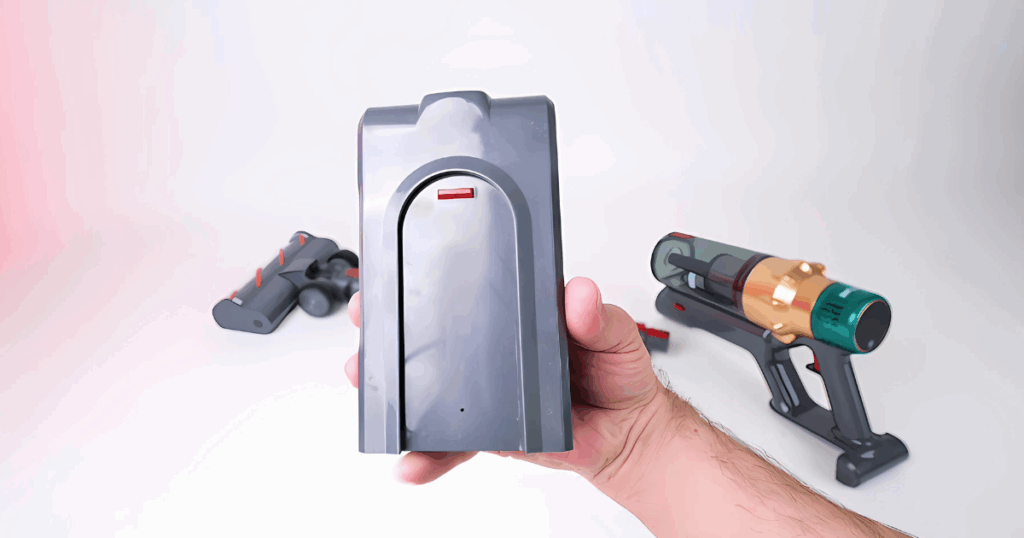
Suction Adjustment
One of the biggest battery life-boosting features that’s come out recently is auto suction adjustment. This is when a vacuum can sense whether you’re vacuuming hard floors or carpets, and boost the suction automatically. Some can even sense if you’re vacuuming a lot of debris. This optimizes battery life and performance and gives you a bit more battery efficiency.
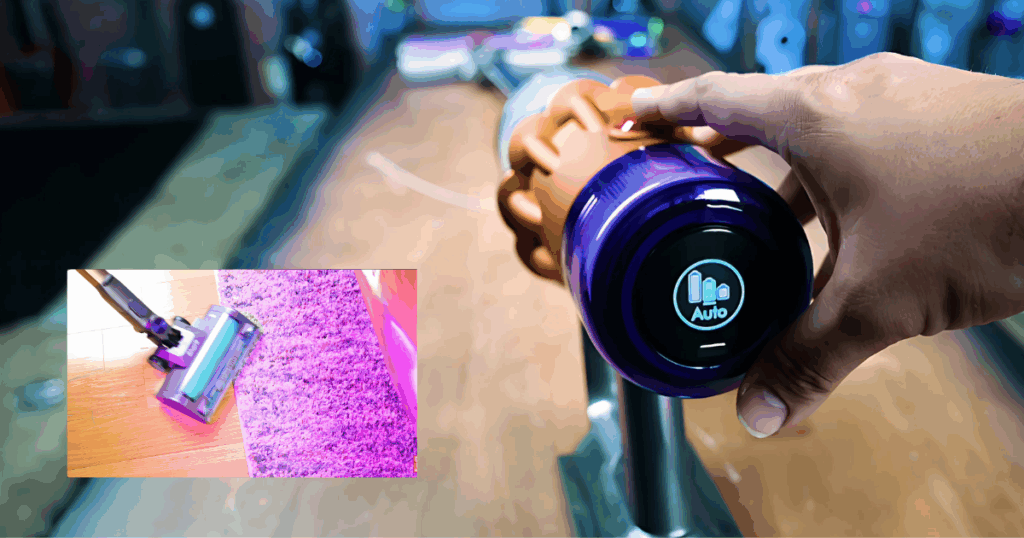
Real-time Battery Life Display
Another battery-related feature we love is the real-time battery life display. This is usually an LED screen on the back that shows the remaining minutes or percentage of battery life. Some high-end or more expensive cordless vacuums will change the number depending on the attachment or power level you are using.
It’s essentially a dynamic real-time number that helps you make real-time decisions about your vacuuming job, and we find it worth the extra cost.
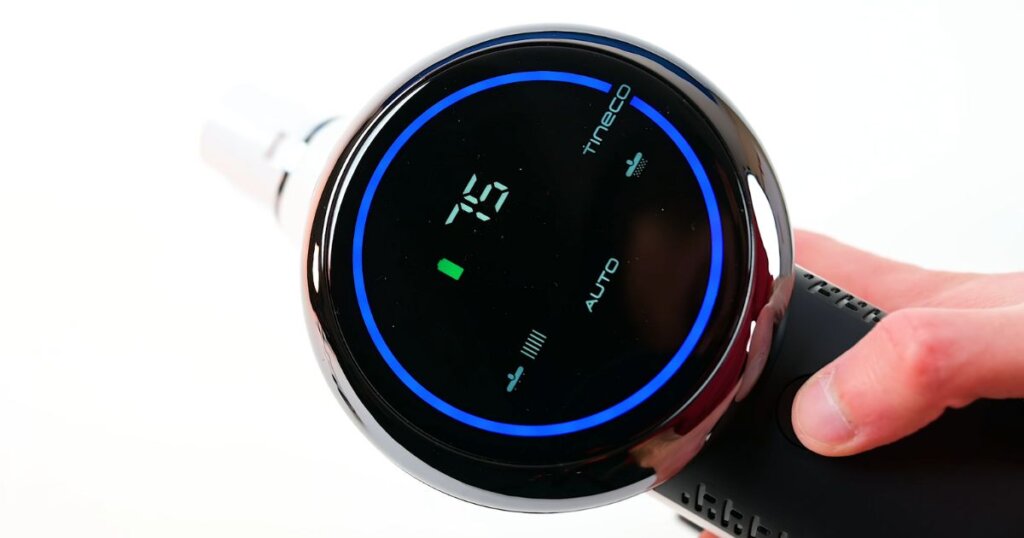
Filtration
When we first started evaluating cordless vacuums, pretty much all but the most expensive ones had bad filtration. That means a pretty good amount of microscopic particles you were vacuuming would get expelled back into the air.
This isn’t great, and just because a vacuum has a HEPA filter doesn’t mean the problem is solved. The cordless vacuum must also have a good seal to trap all the air in the vacuum and force it to go through the HEPA filter.
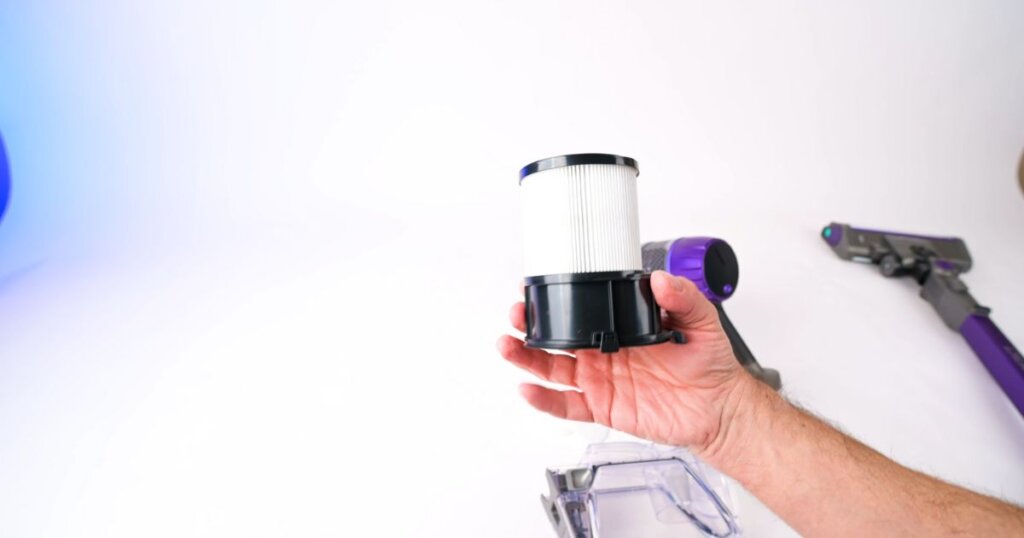
Most manufacturers will explicitly mention if their product has this or not. They’ll call it “complete seal filtration” or something similar in the product description. Thankfully, this feature has been showing up on even cheaper cordless vacuums these days. But if you are looking at any vacuum under $200, most of them will probably not have it.
All ten vacuums on our Best Cordless Vacuums list have sealed HEPA filtration, including our budget pick.
Handle Weight
You’re probably buying a cordless vacuum because you no longer want to lug around a large one anymore. But the problem is, the bigger the battery and the bigger the bin, the larger the handle.
All of the weight of a cordless vacuum is felt in the handle. It can sometimes be more tiring than an upright vacuum if the handle is too heavy.
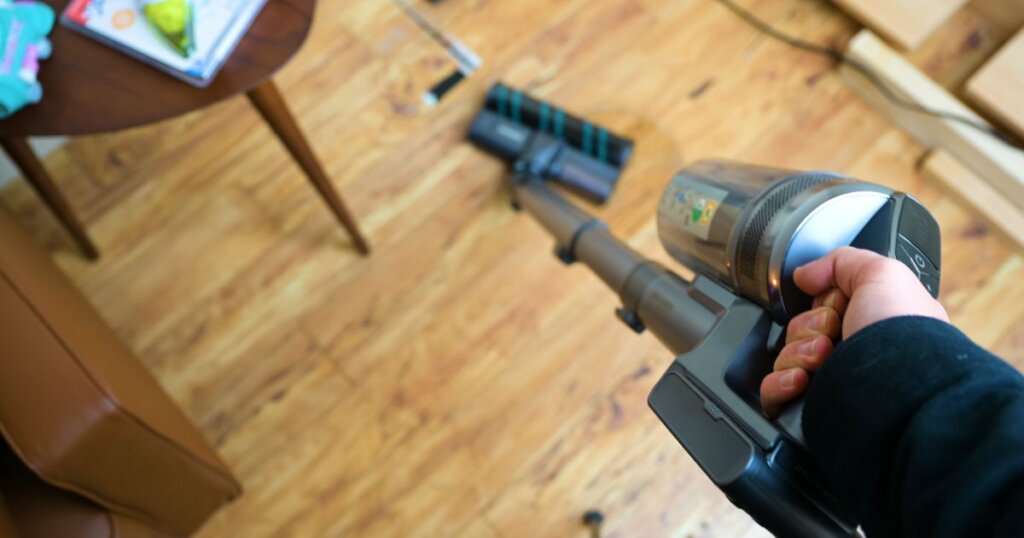
Sometimes, it’s better to sacrifice a little battery life for lower handle weight, especially if you have a smaller space and won’t use all of the battery life in a single cleaning session anyway.
Having a smaller handle is also helpful when doing above-floor cleaning jobs because many of these longer handles don’t make sense in handheld mode. They’re just too awkward, and you can’t get good, precise articulation of your wrists for tasks like dusting jobs.

And unfortunately, there’s no good way to judge the handle weight based on the manufacturer’s specs. However, they often list the product’s weight as a whole. So you can gauge how heavy or light the cordless vacuum is that way.
We measure handle weight in all our evaluations and give it a lot of importance in our final rankings for each cordless vacuum we evaluate.
Versatility
The next thing to look for is versatility. And by that, we mean, does it have a lot of useful attachments or other features that make it more than just a typical floor vacuum? You can check the attachments that come with a particular product to determine its versatility.
Brushes
Some of our all-time favorite attachments are motorized brushes, though these are only useful if you have upholstery, pet beds, or something that needs regular cleaning.
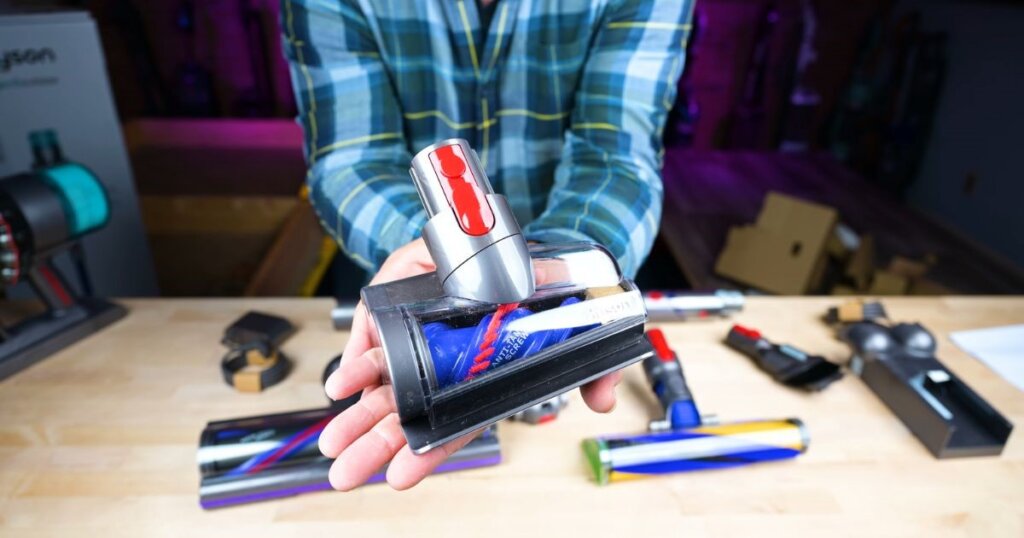
Another favorite of ours is Dyson-style dusting brushes with longer bristles. These can be genuinely awesome for dusting things around the house, like window sills, blinds, and other hard-to-reach places.
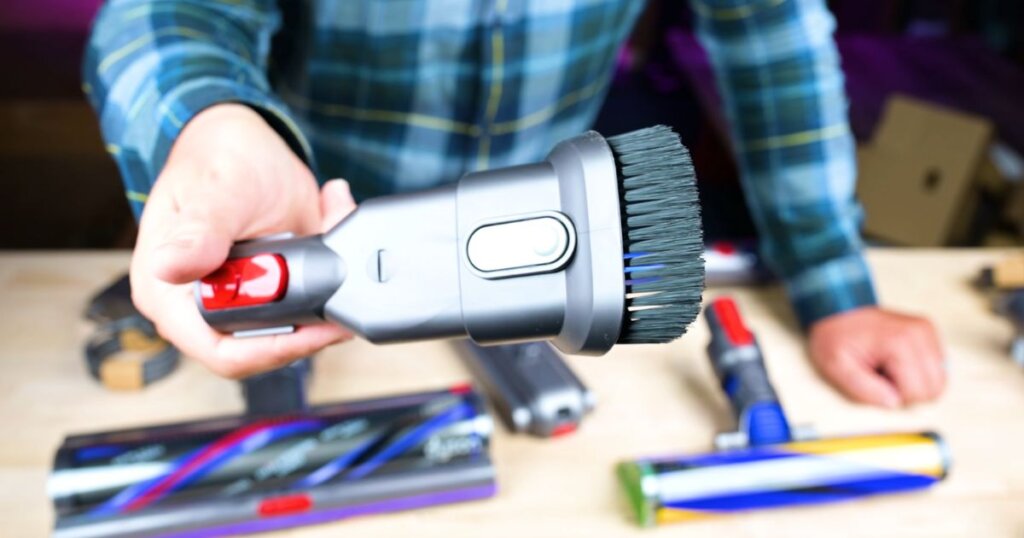
Most manufacturers tend to make their brushes with really short bristles, so they aren’t useful in this way.
Hoses
There are also third-party hoses you can buy separately, particularly for Dysons, to improve handheld cleaning. These allow you to hold all the weight of the vacuum in one hand and use the hose end to manipulate the brush with the other hand. Note that this only works with suction-only attachments – so, for example, you can’t use the hose with a motorized brush.
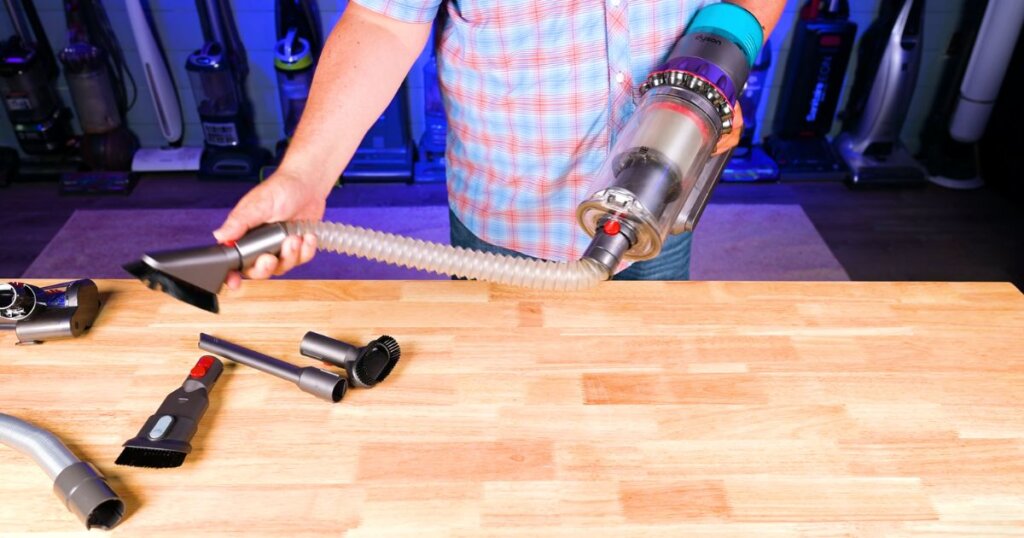
In our cordless vacuums reviews and Top Ten List rankings, we give cordless vacuums an attachment score and include the average attachment score so you can see the relative differences.
Pivoting Wands
This is another excellent feature regarding versatility. We believe Shark was the first to introduce pivoting wands, and we thought it was a gimmick at first. But it really is a game-changer for getting under furniture.
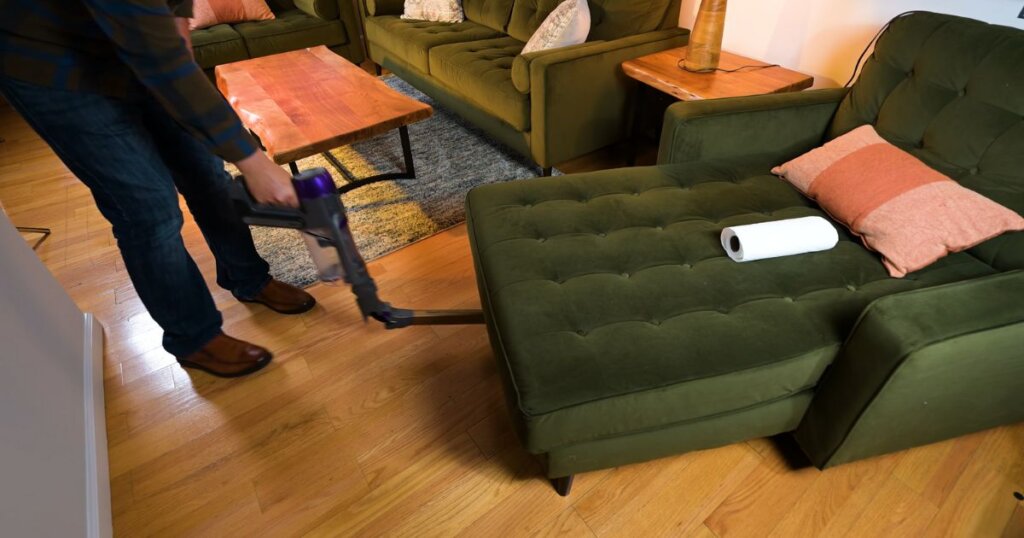
It’s also helpful in storing the vacuum more compactly or just setting it down. Stick vacuums without it tend to be awkward when you want to set them down for a minute.
Auto-Empty Bin
Another huge versatility feature that came out lately is auto-empty bins. These charge the vacuum and automatically empty the dustbin every time you hang it up.
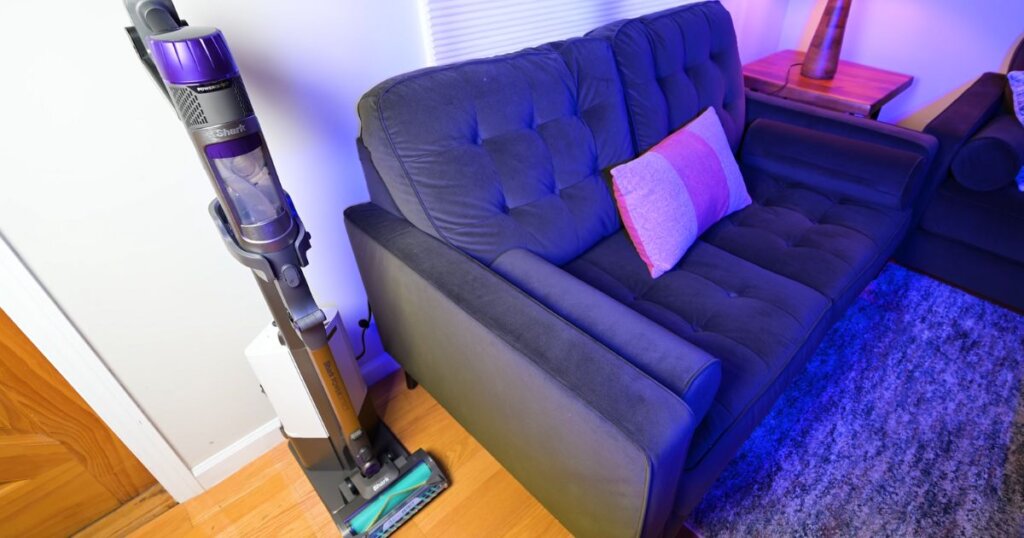
And with this feature, we were also skeptical initially, but have grown to like it. Some are bagged and some are bagless. They almost look like a piece of furniture and are genuinely useful.
Performance Metrics
Performance Metrics are things like suction and airflow. And manufacturers love to talk about suction in particular. It’s like an arms race to see who can claim the most suction power.
However, we’re not sure that matters all that much anymore. Don’t get us wrong, cordless vacuums need to have enough power. But they don’t need much, and the manufacturer’s stated suction numbers on cordless vacuums are less than useful.
Much more important are the floor head mechanics and brush agitation in terms of actual vacuuming performance. So at Vacuum Wars, we evaluate a lot of these things: sealed suction, airflow at the head and hose, and unsealed suction—also known as usable suction at the head.
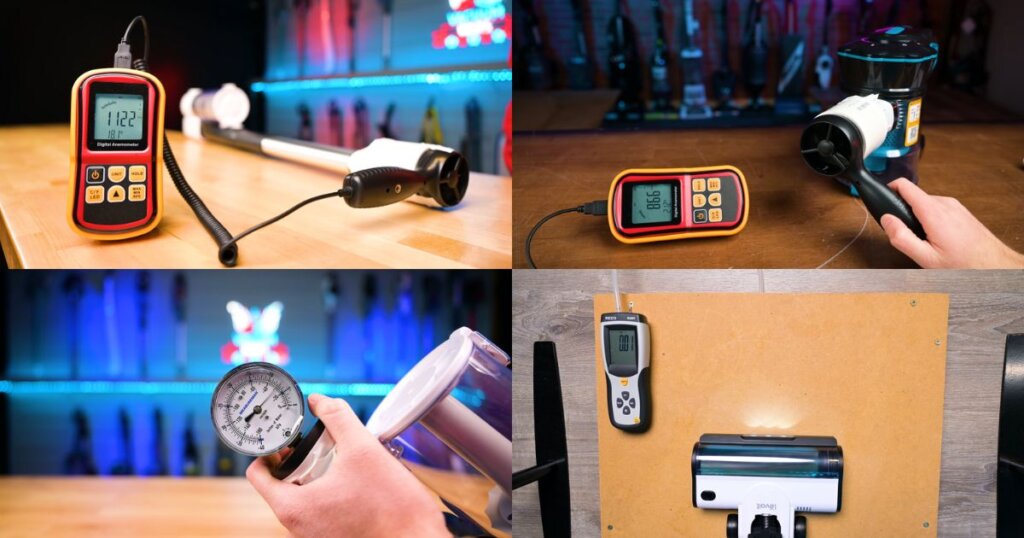
We also consider more practical performance assessments, like the carpet deep clean test. That’s because many things must work well together mechanically for these features to be good at cleaning up deeply embedded debris like sand in carpets.
Generally speaking, cordless vacuums are not as good as corded vacuums in this evaluation. For example, the average carpet deep clean score for a cordless vacuum is 93% (over 100 evaluations done). The average for corded vacuums in the same assessment is about 98%.
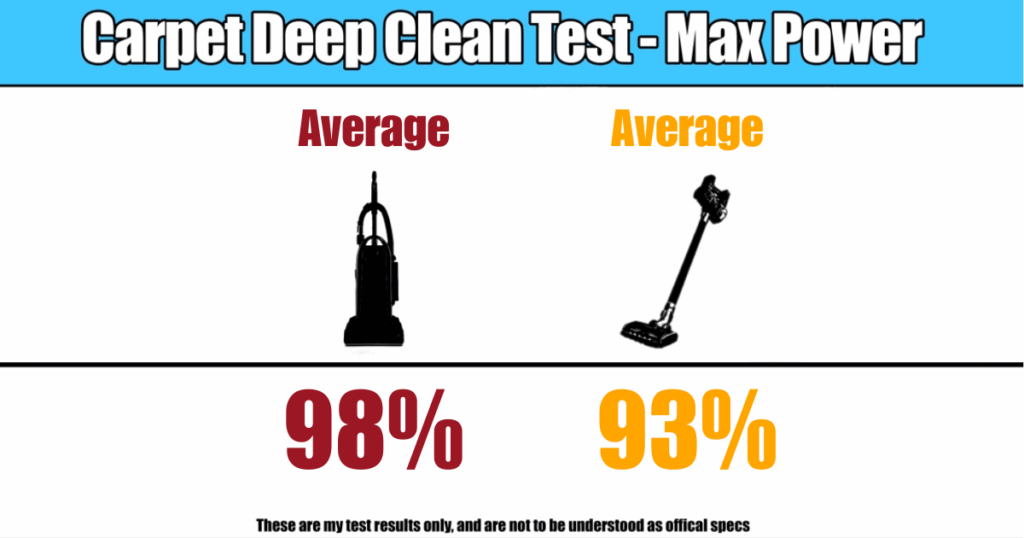
As a rule of thumb, the cheaper the vacuum is, the worse it will be at this assessment. But there are a few exceptions.
Pet Hair
Many people ask “which cordless vacuum is the best for pet hair?” and whether you have cats or dogs, there are a few things to look out for. One new feature in recent years is active hair removal, which means the main brush has little plastic combs in the housing that remove hair as you vacuum.
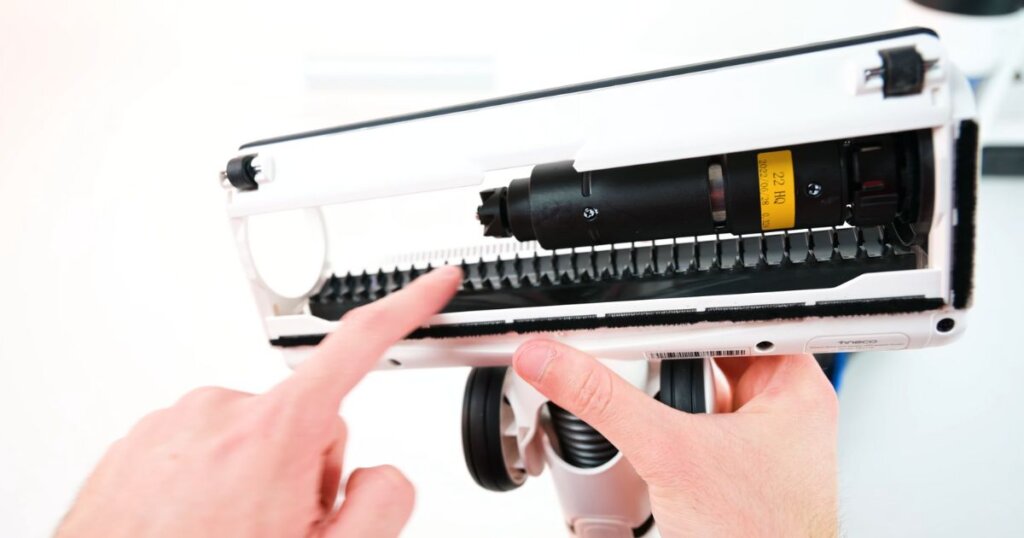
As far as actually picking up the hair, the soft rollers and Duo Clean rollers we mentioned above are the best. They almost magically pick up hair. We used to say, “To touch it is to vacuum it,” when it comes to hair and these soft rollers.
But combo rollers are also good with hair. In general, there isn’t much of a problem with cordless vacuums being able to pick up pet hair. Sure, bin size can be an issue here, although we’ve never considered it a major one. We’ve always assumed that we would empty the bin more often if we had a lot of hair to pick up.

Maintenance
This is an often-overlooked but essential part of the vacuuming experience. If you’re going to invest in a high-quality vacuum, it’s a good idea to set a reminder to:
- clean the bin,
- clear the brushroll,
- clean the filters,
- look for clogs,
- and in the case of the Duo Clean rollers, pop out that front roller and clean behind it once a month.
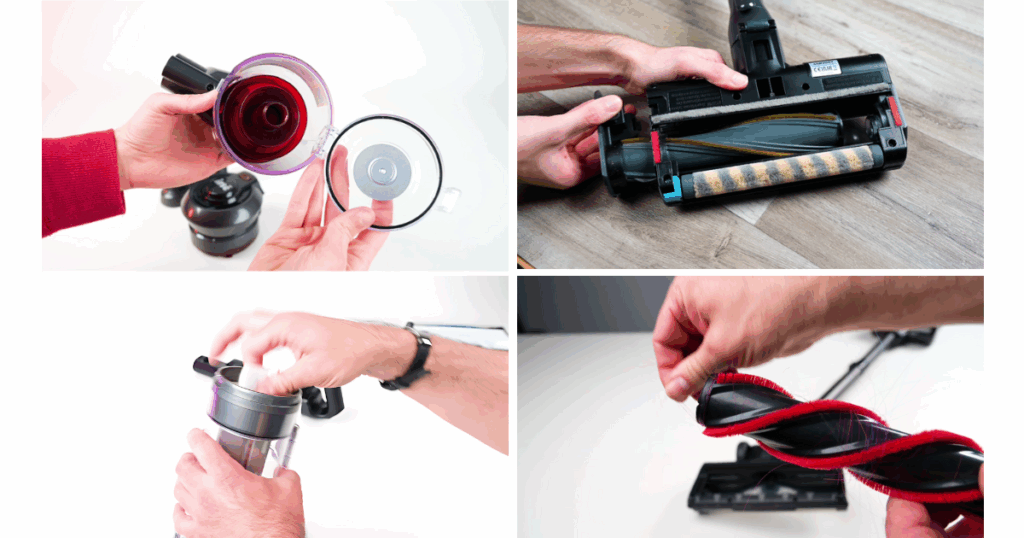
These are ways you can optimize your vacuum’s performance, and it will probably last longer too.
Cordless Vacuums Buyer’s Guide: Final Thoughts
With so many options on the market—and price tags ranging from affordable to premium—it’s important to understand what actually matters based on your cleaning needs. The right vacuum is usually the one that balances performance with practicality.
Ready to Find the Best Cordless Vacuum?
We’ve done the hard work—testing over 100 cordless vacuums in real-world conditions—so you don’t have to.
Visit our regularly updated Top 10 Best Cordless Vacuums list to see which models truly stand out for performance, value, and everyday usability.
Explore the rankings now and find the right vacuum for your home.
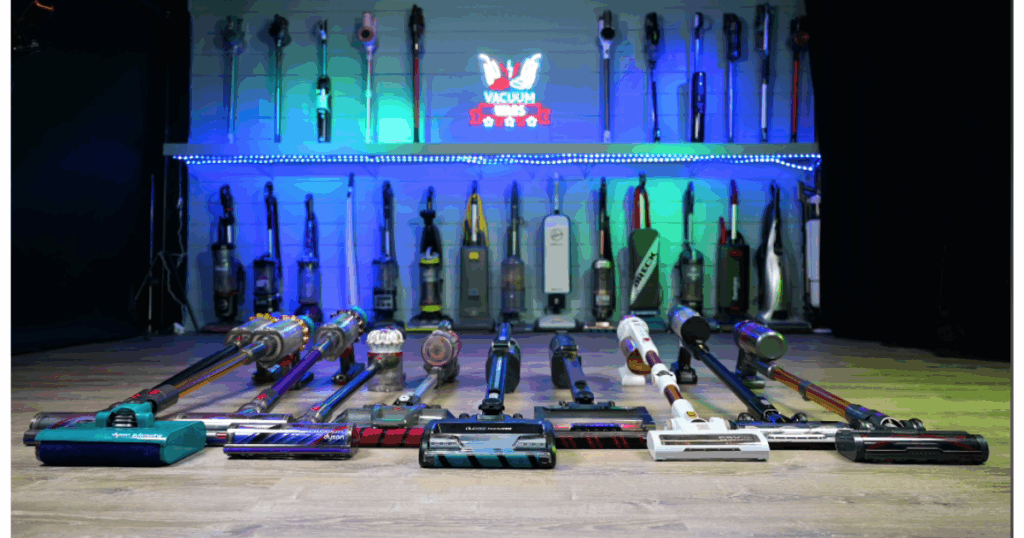
Frequently Asked Questions
What should I consider before buying a cordless vacuum?
Before buying a cordless vacuum, consider your floor type, battery life, filtration, handle weight, attachments, suction power, and features like dual rollers or auto-empty bins. These elements significantly affect usability and performance.
Are cordless vacuums good for both carpets and hard floors?
Yes, many are, but performance depends on the floor head. Combo heads work on both surfaces, but often compromise on one. Soft rollers are best for hard floors, while sealed combo heads are better for carpets.
How long does the battery last on a cordless vacuum?
Battery life varies. On low power, expect 40–60 minutes; medium power offers about half of that, and max power gives 5–10 minutes. Removable batteries and auto suction adjustment can improve runtime.
Is a HEPA filter enough for good cordless vacuum filtration?
No, the vacuum also needs a sealed system to trap particles effectively. Look for terms like “sealed HEPA filtration” or “complete seal” in product descriptions to ensure good air quality.
Do cordless vacuums work well for pet hair?
Yes, especially those with soft rollers, Duo Clean heads, or active hair removal features. These designs effectively pick up pet hair and reduce tangles in the brush roll.
What’s the difference between combo rollers, soft rollers, and dual rollers?
Combo rollers aim to clean all floor types, soft rollers are best for hard floors and fine dust, and dual rollers (like Shark’s DuoClean) combine both to maximize performance across surfaces.
Why is handle weight important in a cordless vacuum?
All the vacuum’s weight is in the handle, so heavier handles can cause fatigue. Lighter handles make cleaning easier, especially for above-floor tasks like dusting or vacuuming upholstery.
What are the best cordless vacuum attachments to look for?
Look for motorized brushes for upholstery, long-bristle dusting brushes for delicate areas, and flexible hoses for handheld use. These attachments improve versatility and convenience.
How important are suction and airflow ratings in cordless vacuums?
While suction matters, floorhead mechanics and brush agitation are equally important. Practical tests like carpet deep cleaning give a better indication of real-world performance.
How do I maintain my cordless vacuum for peak performance?
Clean filters monthly, check for clogs, empty the bin regularly, and clean behind the rollers. Proper maintenance extends the life of your vacuum and keeps performance consistent.
